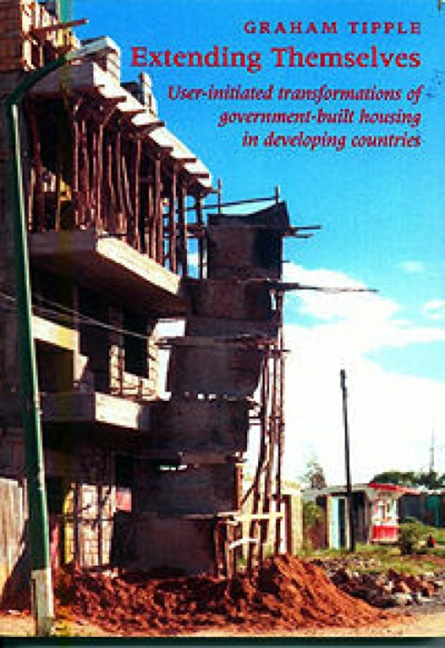 Extending Themselves
Extending Themselves Book contents
- Frontmatter
- Contents
- Acknowledgements
- 1 Introduction
- 2 The housing squeeze
- 3 More than just a dwelling
- 4 The financial element: transformation as an investment
- 5 Sustainability issues
- 6 The transformation process
- 7 The case for transformations
- 8 Policies for enabling transformations
- Appendix 1 Transformations in Bangladesh
- Appendix 2 Transformations in Egypt
- Appendix 3 Transformations in Ghana
- Appendix 4 Transformations in Zimbabwe
- Appendix 5 An assessment of the decision to transform
- References
- Index
1 - Introduction
- Frontmatter
- Contents
- Acknowledgements
- 1 Introduction
- 2 The housing squeeze
- 3 More than just a dwelling
- 4 The financial element: transformation as an investment
- 5 Sustainability issues
- 6 The transformation process
- 7 The case for transformations
- 8 Policies for enabling transformations
- Appendix 1 Transformations in Bangladesh
- Appendix 2 Transformations in Egypt
- Appendix 3 Transformations in Ghana
- Appendix 4 Transformations in Zimbabwe
- Appendix 5 An assessment of the decision to transform
- References
- Index
Summary
In January, 1984, CARDO staff were in Egypt with our Masters course students when, on a visit to 15th May City, Helwan, we passed an apartment housing area which had begun to sprout extensions on all five floors. On our free afternoon, Nick Wilkinson and I went back to Helwan, with one of our students, Shahidul Ameen, and sought out this seemingly bizarre phenomenon. Sure enough, balconies had been filled in rather more than usual for Egypt, goat and turkey cages were slung on the outside of the flats, and an occasional upper floor dweller had cantilevered out an extension. However, exploring deeper into the area revealed more spectacular feats of extension with the beginnings of the five-storey stacks with which we are now so familiar. We were at once outraged and fascinated; the gall of it was outrageous, the engineering was unconventional and daring, but the achievement was admirable.
We were so taken with what we had seen that we returned one year later, under a British Council Academic Link, and conducted a small survey with colleagues from the University of Helwan, Zamalek. Our fascination was firmly rooted by this study and the findings were published over the next few years in order to give the phenomenon a wide airing and attract some interest (Tipple et al., 1985, 1986; Wilkinson and Tipple, 1987, Tipple, 1991). This was followed by a literature review (Tipple, 1991a, sponsored by the Overseas Development Administration [now Department of International Development]) and finally the study on which this book is based.
The purpose of the book
This book is the result of several years of empirical study beginning from a vaguely favourable stance towards transformations. The empirical results did nothing to counter this stance and much to amplify it. Thus, we began the writing process with a very positive attitude. The purpose of the book, therefore, is to argue that transformations are a valid activity in housing supply and should be supported as part of a country's housing policy. In order to achieve this cogently, we must do the following:
1. describe and compare the characteristics of transformation in the four case study areas, Bangladesh, Egypt, Ghana, and Zimbabwe;
2. identify advantages and disadvantages of transformation as a housing supply mechanism, and establish a balance between them;…
- Type
- Chapter
- Information
- Extending ThemselvesUser Initiated Transformations of Government-built Housing in Developing Countries, pp. 1 - 20Publisher: Liverpool University PressPrint publication year: 2000


